Figures & data
Figure 1. Effects of psyllium seed husk (PSH) on 5/6 nephrectomy (5/6Nx) rats. (A) Body weight; (B) food intake; (C) 24-h urine protein; (D) serum creatinine (SCr); (E) blood urea nitrogen (BUN); (F) serum level of indoxyl sulfate (IS). (G) ΔSCr from baseline to the end point. (H) ΔBUN from baseline to the end point. Data are presented as mean ± standard deviation for each measurement (*p<.05, **p<.01).
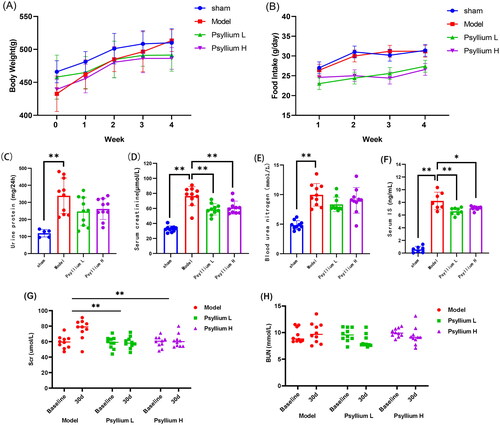
Figure 2. PSH inhibits kidney damage and systemic inflammation in 5/6Nx rats. (A) Hematoxylin and eosin (H&E), periodic acid-Schiff, and Masson staining of kidney tissue (×100); (B) tubulointerstitial injury; (C) area of kidney fibrosis; (D) serum levels of interleukin (IL)-1β; (E) serum levels of IL-6. Data are presented as mean ± standard deviation (*p<.05, **p<.01).
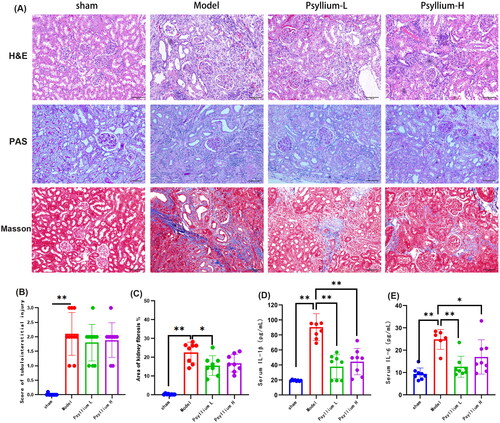
Figure 3. Regulation of PSH of the gut microbiome in 5/6Nx rats. (A) Species accumulation curve; (B) partial least squares discrimination analysis comparing the β-diversity of gut microbiota; (C) Shannon index (α-diversity); (D) Chao index (α-diversity); (E) Simpson index (α-diversity); (F) Bacteroidetes/Firmicutes ratio; (G) composition of the gut microbiota at the phylum level; (H) composition of the gut microbiota at the genus level.
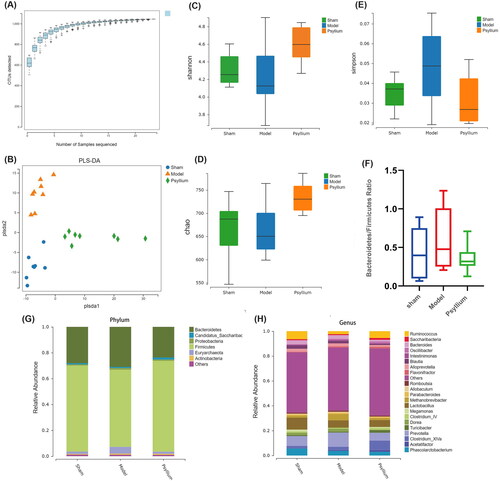
Figure 4. Metabolic analysis based on gut microbiome. (A) Linear discriminant analysis of effect size of bacteria with significant effects on different groups. (B) MetaCyc function analysis of PSH using Wilcoxon’s test.
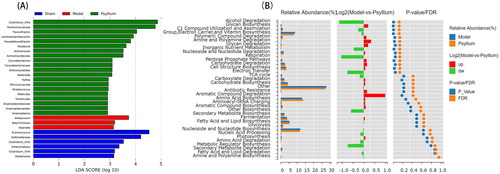
Figure 5. PSH improves intestinal barrier integrity in 5/6Nx rats. (A) H&E staining of colon tissue (×100); (B–E) immunohistochemical analysis of tight junction proteins of the intestinal mucosal barrier (occludin and claudin-1) in colon tissue; (F) serum level of diamine oxidase. Data are presented as mean ± standard deviation (*p<.05, **p<.01).
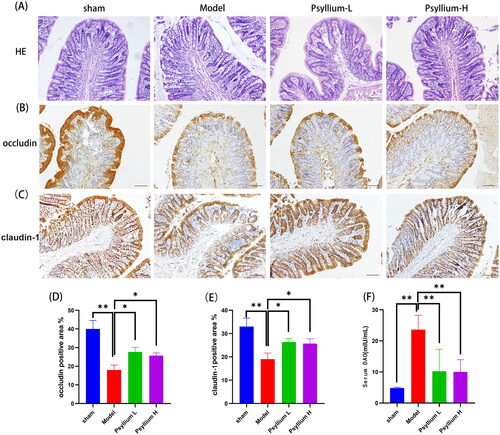
Data availability statement
The datasets used and/or analyzed in this study are available from the corresponding author upon reasonable request.
